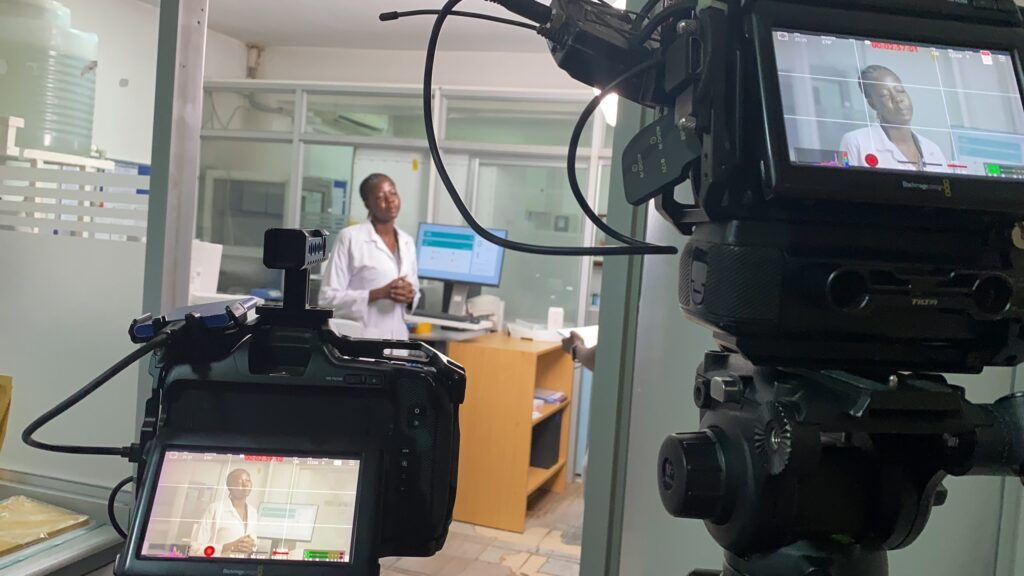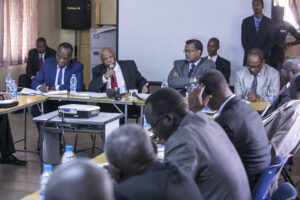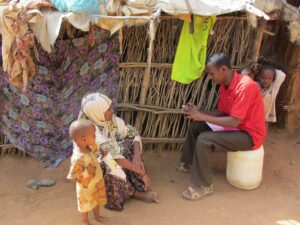Introduction
In the heart of Uganda, where verdant landscapes and vibrant cultures meld, storytelling emerges as a potent tool for NGOs to connect with audiences, convey vital messages, and drive profound change. When we speak of storytelling, it’s not merely about narrating events; it’s about creating an emotional resonance that captures hearts and minds. For NGOs in Uganda, harnessing the art of storytelling through documentary videography in Uganda can significantly amplify their impact, leaving an indelible impression that inspires action and support.
Understanding Documentaries
Documentaries are more than just films; they are profound chronicles of reality, designed to inform, educate, or inspire viewers about real-life issues, events, or people. Whether expository, observational, participatory, reflexive, or performative, each type serves a unique purpose but shares a common goal: to tell a true story that deeply resonates with audiences.
The Impact of Storytelling
Through the lens of documentary videography in Uganda, storytelling for NGOs becomes a vessel of emotional connection. This connection is vital as it fosters trust and credibility. When viewers witness the real-life struggles and triumphs of those affected by the issues an NGO addresses, they are more likely to empathize and offer support. Documentaries also serve as powerful educational tools, illuminating the intricacies of specific issues and the relentless efforts to address them.
Why Choose Documentaries?
Documentaries captivate with their visual impact and deep engagement. Unlike written reports or statistics, they use the potent combination of images and sounds to tell a story, making the information more relatable and memorable. They are versatile, easily distributed through social media, websites, film festivals, and television. Their longevity ensures that they can be repurposed to reach new audiences over time, extending their impact far beyond their initial release.
How Documentaries Strengthen NGO’s Impact
Documentary videography in Uganda offers NGOs a unique opportunity to showcase real stories and experiences. This authenticity helps highlight the challenges faced by communities and the innovative solutions being implemented. By presenting these stories, NGOs can mobilize support and resources more effectively. Donors and volunteers are more likely to contribute when they see tangible evidence of the work being done and the positive outcomes achieved.
Creating an Effective Documentary
Crafting an effective documentary involves several crucial steps. First, identifying the core message is essential. This message should be clear and focused, guiding the entire narrative. Planning and scripting are vital to outline the story structure and key elements. Filming and production demand meticulous attention to detail to capture high-quality visuals and sound. Finally, editing and post-production bring the story to life, ensuring a polished and compelling final product.
Tips for Compelling Storytelling in Documentaries
To create a compelling documentary, focus on human stories that viewers can connect with emotionally. Use strong visuals and sound to craft an immersive experience. Keep the narrative clear and engaging, avoiding unnecessary complexity. The aim is to make the audience feel a deep connection to the story, inspiring them to take meaningful action.
Case Studies of Successful NGO Documentaries
Example 1: Documentary on Environmental Conservation
An NGO dedicated to environmental conservation in Uganda produced a documentary highlighting the devastating impact of deforestation on local communities and wildlife. Featuring personal stories from affected individuals and showcasing the NGO’s reforestation efforts, the film significantly increased awareness and support for their cause.
Example 2: Documentary on Social Justice
A social justice NGO created a documentary following the lives of individuals fighting for equal rights in Uganda. The film provided a platform for marginalized voices and highlighted the NGO’s advocacy work, leading to a surge in donations and volunteer sign-ups.
Leveraging Documentaries for Fundraising
Documentary videography in Uganda can be a powerful tool for fundraising. By engaging donors through emotional storytelling, NGOs can vividly showcase the impact of their work and the importance of continued support. Documentaries can be featured in fundraising campaigns, donor events, and online platforms, making a compelling case for why donations are needed and how they will be used.
Documentaries and Advocacy
Beyond fundraising, documentaries are potent for advocacy. They raise awareness about critical issues and influence policy changes. By collaborating with other organizations and stakeholders, NGOs can use documentaries to build broader support for their causes and drive systemic change. For instance, organizations like Human Rights Watch use documentaries to highlight human rights abuses worldwide, showcasing the power of visual storytelling in advocacy.
Promoting Your Documentary
Promotion is key to maximizing the impact of your documentary. Utilize social media and online platforms to reach a wide audience. Hosting screenings and events can create buzz and engage local communities. Additionally, traditional media coverage can amplify your message and attract attention from larger networks.
Measuring the Impact of Your Documentary
To measure the impact of your documentary, track views and engagement across different platforms. Gather feedback from the audience to understand their reactions and takeaways. Analyze how the documentary influences donations, volunteer sign-ups, and overall support for your NGO.
Challenges in Producing Documentaries
Producing documentaries comes with its challenges. Budget constraints can limit production quality, while technical and logistical issues can complicate filming. Maintaining authenticity and integrity is crucial, ensuring that the stories told are truthful and respectful of those involved.
Future Trends in NGO Storytelling through Documentaries
Looking ahead, new technologies such as virtual reality (VR) and augmented reality (AR) are opening up exciting possibilities for storytelling. Personalized storytelling can create more targeted and impactful narratives. Increased collaboration with filmmakers and other NGOs can enhance production quality and reach.
Conclusion
In conclusion, storytelling through documentaries holds immense power for NGOs. It can create emotional connections, build trust, and drive action. By leveraging the visual and emotional impact of documentaries, NGOs can strengthen their impact, mobilize support, and create lasting change. Embrace this powerful tool, and let your stories inspire and transform the world. For NGOs in Uganda looking to make a significant impact, exploring documentary videography in Uganda through services like those offered by QDIC can be the first step towards a brighter future.
FAQs
How long should an NGO documentary be?
The length of an NGO documentary can vary, but typically, a short documentary ranges from 5 to 30 minutes, while a feature-length documentary can be 60 minutes or more. The length should be determined by the story’s complexity and the attention span of the target audience.
What is the cost of producing a documentary for an NGO?
The cost of producing a documentary can vary widely depending on factors such as length, production quality, and location. A low-budget documentary might cost a few thousand dollars, while high-end productions can run into the hundreds of thousands.
How can NGOs distribute their documentaries effectively?
NGOs can distribute documentaries through social media platforms, their websites, YouTube, and Vimeo. Additionally, they can organize screenings at community events, film festivals, and educational institutions to reach a broader audience.
What are some common pitfalls to avoid in NGO documentaries?
Common pitfalls include failing to plan adequately, not securing necessary permissions, and overlooking the importance of quality visuals and sound. Additionally, it’s crucial to avoid misrepresenting the people or issues featured in the documentary.
How can NGOs measure the success of their documentaries?
Success can be measured by tracking viewership numbers, audience engagement, and feedback. Additionally, NGOs should assess the documentary’s impact on fundraising, volunteer sign-ups, and overall support for their cause.
By weaving the tales of Uganda through the vivid tapestry of documentary videography in Uganda, NGOs can not only tell their stories but also transform lives, one frame at a time.






